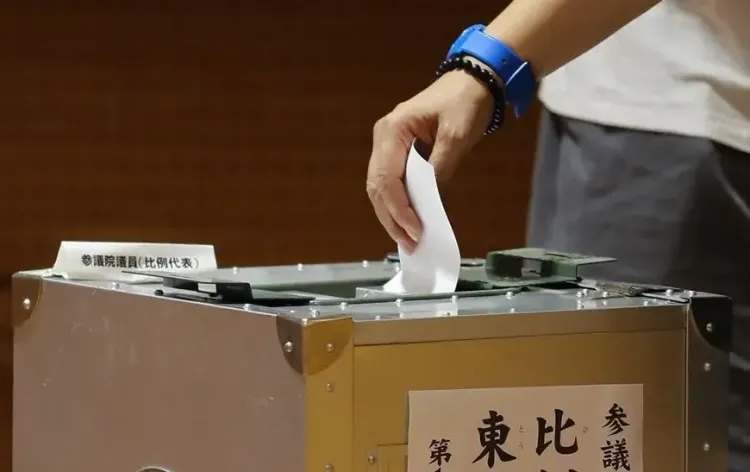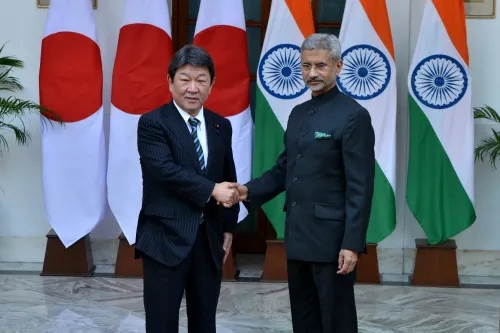Will Japan's Parliament Elect Sanae Takaichi as PM?

Synopsis
Key Takeaways
- Sanae Takaichi is expected to be elected as Japan's Prime Minister.
- Her coalition with the Japan Innovation Party is pivotal for her election.
- Her government may struggle with legislative support due to a lack of majority.
- Takaichi is known for her conservative stance on social issues.
- Opposition parties are attempting to unify against her election.
Tokyo, Oct 21 (NationPress) Japan's parliament commenced the voting process on Tuesday to select the nation's prime minister, with the leader of the ruling Liberal Democratic Party, Sanae Takaichi, anticipated to assume the position, backed by the newly formed coalition with the Japan Innovation Party.
Earlier today, outgoing Prime Minister Shigeru Ishiba tendered his resignation alongside his cabinet, marking the conclusion of an administration that has been in power for just over a year.
During an extraordinary cabinet meeting held shortly before 9 a.m. local time, ministers presented their letters of resignation, officially dissolving the Ishiba cabinet.
Following the voting for the prime minister, Takaichi will finalize her cabinet appointments, with an announcement from the chief cabinet secretary expected to follow, according to reports from the Xinhua news agency.
Upon taking office, Takaichi is also anticipated to hold a press conference to outline her policy direction and the reasoning behind her key cabinet selections.
The LDP has forged a tactical alliance with the Osaka-based right-wing Japan Innovation Party, also recognized as Ishin no Kai. This coalition is likely to facilitate Takaichi's election as prime minister later today, primarily due to the fragmented opposition landscape.
However, despite this alliance, Takaichi's coalition does not possess an outright majority in either house of parliament. This implies her government will require support from other opposition factions to enact legislation, raising questions regarding the stability and endurance of her administration.
Once elected, the 64-year-old Takaichi is expected to assemble a cabinet comprising close allies of Taro Aso, a prominent figure within the LDP, alongside others who backed her during the party leadership contest.
Takaichi has been characterized by her resistance to progressive reforms, particularly concerning gender equality. She has opposed same-sex marriage, advocates for male-only succession within the imperial family, and does not support legal changes allowing married couples to retain separate surnames.
Leaders from three significant opposition parties—the Constitutional Democratic Party of Japan, the Democratic Party for the People, and the Japan Innovation Party—held discussions on Wednesday.
These three parties hold a relatively substantial number of seats in the Diet, Japan's parliament. If they were to unify and present a joint opposition candidate for the prime ministerial vote, they could potentially thwart Takaichi's ascension to the role. However, the parties were unable to reach a policy consensus during their meeting.
Meanwhile, the Japan Innovation Party has engaged in policy discussions with the ruling LDP for two consecutive days, aiming to solidify their coalition.
The party's co-leader, Fumitake Fujita, informed the media on Friday that the consultations with the LDP have made significant progress, and they are nearing a final agreement on cooperation, indicating that his party would conclude discussions with the other two major opposition parties.
In light of the Japan Innovation Party's decision, the largest opposition party, the Constitutional Democratic Party of Japan, announced on Friday that it is now contemplating having its members cast votes for its leader, Yoshihiko Noda, in the upcoming prime ministerial vote.









